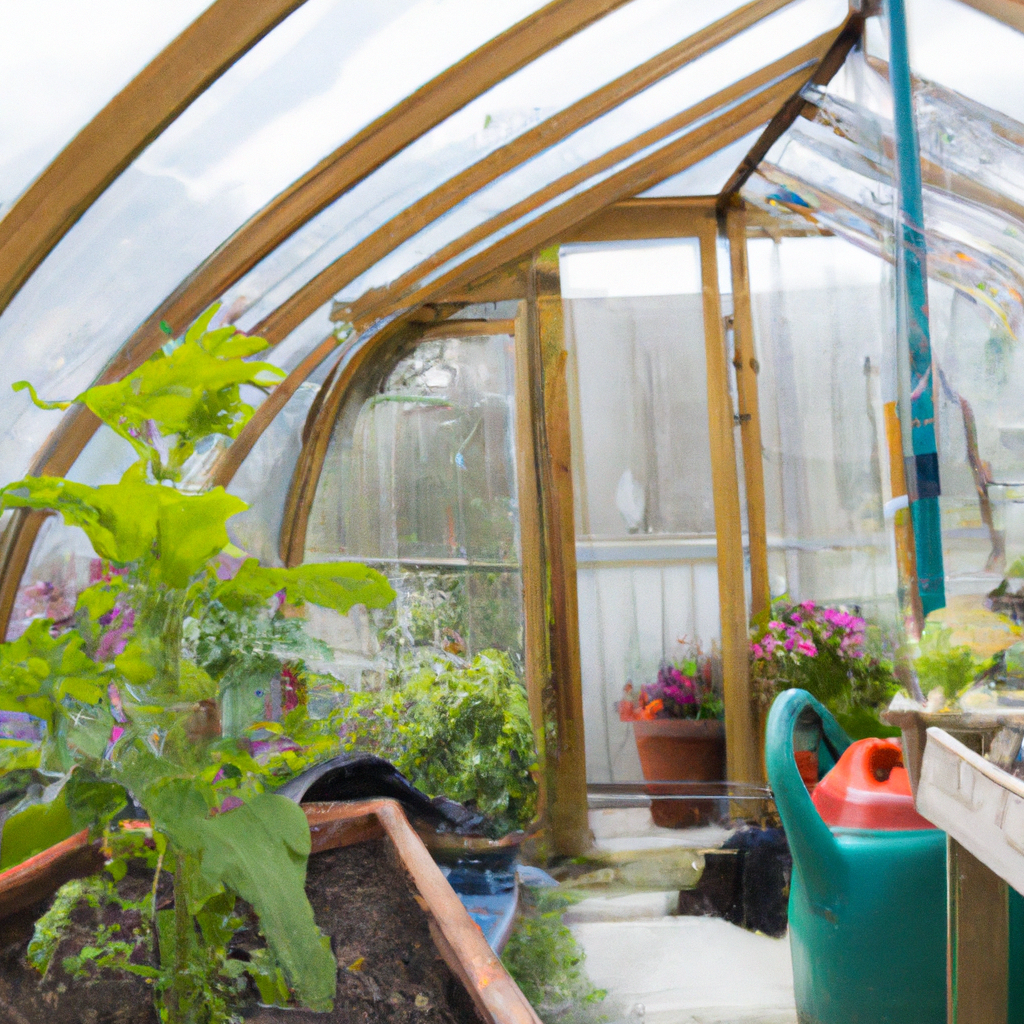As you embark on your greenhouse gardening journey, one crucial aspect that cannot be overlooked is the art of fertilizing your beloved plants. The image of foliage and flowers brimming with life and color and tantalizing aromas filling the air within your greenhouse oasis are what passionate gardeners continuously strive for. What if I told you the secret to achieving this heavenly greenhouse paradise lies in understanding the fundamentals of fertilizing? This blog post will unravel the mysteries behind giving your greenhouse plants the perfect nutrient boost they need to flourish and brighten your days. Get ready to indulge your green thumb in a crash course on fertilizing your greenhouse haven!
Importance of adequate nutrition for greenhouse crops
Maintaining adequate nutrition is crucial for producing high-quality greenhouse crops. Growers typically rely on a
Liquid feed program as primary means of nutrient supply
A liquid feed program serves as the primary means for supplying nutrients to greenhouse plants. This method ensures that the plants receive the necessary elements in the right proportions for optimum growth. It is widely accepted that a constant feed, where soluble fertilizer is applied at each irrigation, is the best system for achieving this goal. Some nutrients may need to be administered at alternate irrigations, especially under high soluble salts. Maintaining a balance of nutrients while using a liquid feed program is crucial to avoid any deficiencies or toxicities resulting from imbalanced nutrition. Ultimately, a well-executed liquid feed program contributes to maintaining greenhouse plants' vigor and overall health.
Supplementing with granular/slow-release fertilizers
Incorporating granular or slow-release fertilizers into a greenhouse plant's growing medium effectively supplements its nutritional needs. These fertilizers release nutrients at a controlled rate over a period of time, ensuring continuous nutrient availability for optimal plant growth. By doing so, they help to reduce the risk of nutrient imbalances or deficiencies, which could hinder the health and performance of the greenhouse plants. Granular and slow-release fertilizers can be combined with a liquid feed program to provide a well-rounded and robust nutritional regimen for a wide range of greenhouse crops.
Frequency of fertilizer applications affecting plant growth
Proper fertilization is crucial for optimal plant growth in
In some situations, modifying the constant feed strategy may be necessary, particularly when high soluble salt concentrations are present. In such cases, nutrients could be applied at every other irrigation instead. By adjusting the frequency of fertilizer applications, greenhouse growers can effectively manage the nutritional requirements of their plants and maintain overall crop health.
Constant feed program for optimum growth
A constant feed program is widely accepted as the best system to optimize plant growth in greenhouses. This approach involves the application of water-soluble fertilizer at each irrigation event, providing plants with a steady supply of essential nutrients.
Balancing plant nutrients is critical for producing vigorous and healthy plants, as imbalances can lead to severe deficiencies or toxicities. Therefore, growers should carefully consider both the source and amount of fertilizer used to achieve the optimal balance for plant growth.
Custom blending fertilizers to achieve the desired balance
Maintaining proper plant nutrition is a critical aspect of greenhouse crop production. Growers often use liquid feed programs to supply nutrients to their plants, which can be supplemented with granular or slow-release fertilizers added to the growing medium. To optimize plant growth and avoid nutrient imbalances, many greenhouse growers custom blend different fertilizers to create the perfect balance for their crops. This approach enables them to precisely provide the required nitrogen, phosphorus, and potassium levels, as well as secondary and micronutrients, to ensure vigorous and efficient plant growth.
Key nutrients
Greenhouse gardening provides a protective environment that allows plants to grow optimally compared to outdoor plants. However, this environment also alters the plant's nutrient requirements, influencing the necessary elements provided by fertilizers.
Among the essential nutrients for greenhouse plants are Nitrogen (N), Phosphorus (P), and Potassium (K), also known as macronutrients. Nitrogen promotes vegetative growth, while Phosphorus plays a crucial role in root development and flowering. Potassium, on the other hand, helps maintain plant health and improves resistance against diseases.
In addition to macronutrients, greenhouse plants also require secondary nutrients, such as Calcium (Ca), Magnesium (Mg), and Sulfur (S). These elements contribute to essential plant functions, with Calcium responsible for overall plant robustness, Magnesium aiding in photosynthesis, and Sulfur contributing to the synthesis of amino acids.
Lastly, micronutrients, including Iron (Fe), Zinc (Zn), Copper (Cu), Manganese (Mn), Boron (B), Molybdenum (Mo), and Chloride (Cl), must not be neglected. Although required in smaller quantities, these micronutrients are involved in vital plant processes, such as enzymatic reactions and energy production.
In summary, providing an adequate balance of key nutrients in a greenhouse environment is vital for the optimal growth and health of the plants. Assessing their needs and adjusting fertilizer inputs can ensure vigorous, efficient, high-quality plant production.
Secondary and micronutrients for complete nutrition
A complete nutritional program for greenhouse plants needs to take into account not only the macronutrients like nitrogen (N), phosphorus (P), and potassium (K) but also the secondary and micronutrients. Secondary nutrients include elements such as calcium (Ca), magnesium (Mg), and sulfur (S). Micronutrients, on the other hand, are made up of iron (Fe), zinc (Zn), copper (Cu), manganese (Mn), boron (B), molybdenum (Mo), and chloride (Cl).
While some of these nutrients may already be present in the growing medium, others may require supplementary applications. Ensuring an optimal balance of these essential elements is key to maintaining robust and efficient plant growth in a greenhouse environment.

